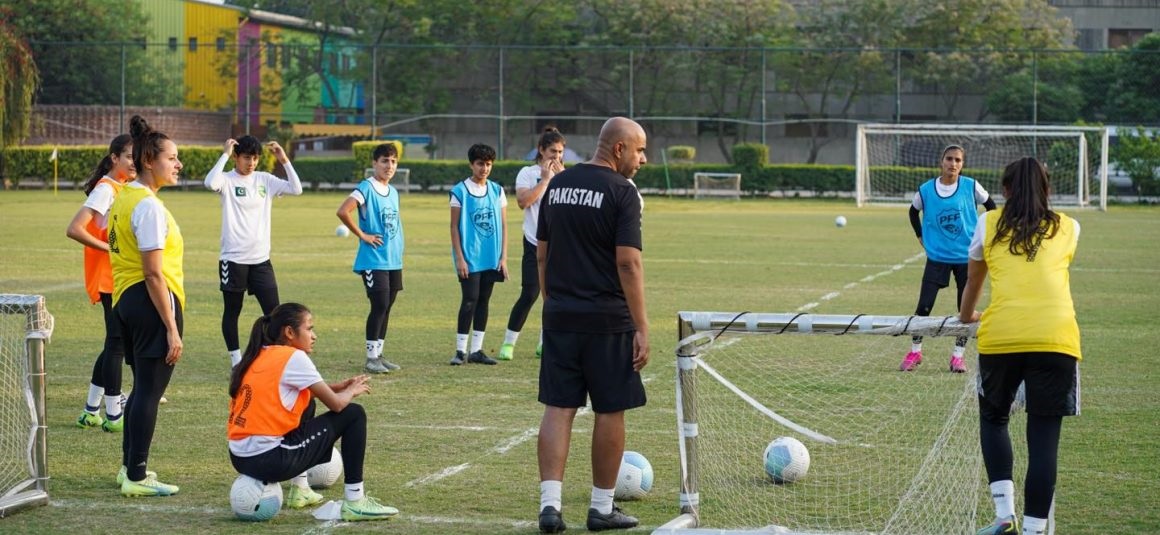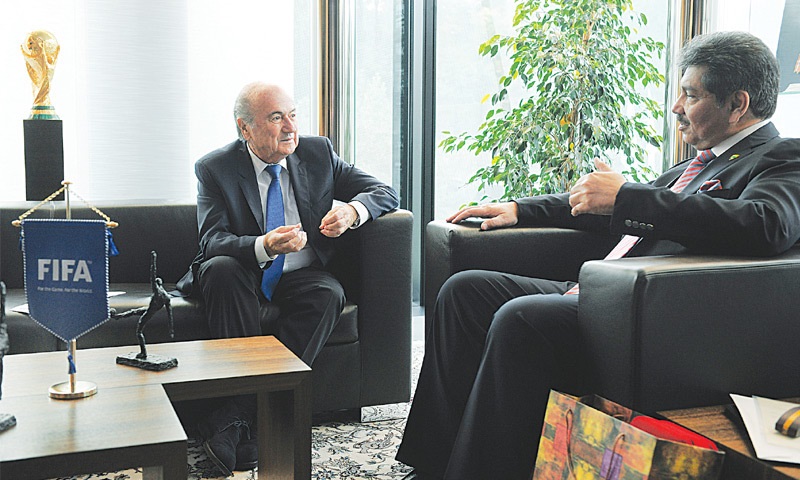Written by: Tanveer Ali
Posted on: September 03, 2024 |  | 中文
| 中文
Team Pakistan celebrates after defeating India in a friendly match in 2014 in Bangalore
Pakistan ranks 197th out of a total of 210 teams in the FIFA (Fédération Internationale de Football Association, or International Federation of Association Football) rankings. Football, also known as soccer in some regions, is unarguably one of the most popular sports in the world. However, this great game has failed to make it big in Pakistan, where the population is obsessed with cricket. The popularity of football has stagnated in Pakistan over the years, mainly due to problems in the administration of the sport, notably the Pakistan Football Federation (PFF), because of political interference. Abrupt administrative changes in any organization can result in poor planning and lack of implementation of the designed strategies, which has plagued Pakistan football over the years. Moreover, Pakistan has a small football development system with poor talent-nurturing facilities, few training facilities and poor coaching facilities, especially in the countryside. This hampers the players' skills and growth, particularly for young players. Worse still are the socio-cultural factors that place more value on cricket than football, which leads to a lack of support for the sport within the populace and the media. All these factors make it very difficult for football to grow and develop in Pakistan.

Head coach of Pakistan Women football team Adeel Rizki with Pakistani female footballers in their training camp.
The first challenge that football faces in Pakistan is that the Pakistan Football Federation (PFF) needs to be in better shape, and there is no certainty when it will become stable. The Pakistan Football Federation, or most commonly known as PFF, which is the body that is supposed to supervise the development of the sport in the country, has often been crippled by political struggles and poor management. For years, the PFF faced one governance crisis after another, with factions within the organization always struggling for power. The change in the power corridors of the PFF results in changes in policies regarding the promotion and development of football in Pakistan, which leads to no stable policy direction. As many programs launched under one president of the federation are changed abruptly during the next president’s term, previous programs are scrapped altogether, disregarded, or repackaged. Since there have been severe internal conflicts, it has become nearly impossible for Pakistan to develop a proper and robust plan to foster the football culture, covering both youngsters and the professional league. Mian Muhammad Azhar was president of the federation from 1990-2003, while Faisal Saleh Hayat, termed the feudal lord of Pakistan football, was at the helm from 2003 to 2017. The allegations of rigging and fraudulent elections were so prevalent that FIFA had to intervene many times, while Faisal Saleh Hayat had to abdicate his post after the Supreme Court intervened in 2018 and held elections under its supervision. These issues at the administrative and political level are just the tip of the iceberg.

Former president of PFF Faisal Saleh Hayat meets FIFA president Sepp Blatter during his visit to the FIFA House in Zurich, 2014. (Courtesy PFF)
Another major factor hampering the development of football in Pakistan is the lack of proper infrastructure at the grassroots level. Grassroots development must be encouraged to develop young talents because it is the root of any sport. Unfortunately, Pakistan does not have the proper systems and infrastructure for grassroots football. Some regions cannot provide well-maintained football pitches, training equipment and other facilities, nor can they provide qualified trainers to help in the skill development of the players. In urban areas where some facilities may be available, they are generally very limited in terms of numbers and the quality of the services provided. In rural areas, where the majority of the population lives, football facilities are non-existent. This disparity also diminishes the chances of talented young players to refine their skills, improve their fitness and gain exposure to the game at the national level.
The systematic issues often pointed out by former players and coaches are evidence of the major issues plaguing football in Pakistan. Even former big players like Kaleemullah Khan, former captain of the national team, and coach Muhammad Anwar have not held back their criticism of the poor and unfriendly environment for football in Pakistan. They say that young players can access the right tools by establishing a suitable base and a well-defined developmental plan. Experts also argue that there is a significant lack of proper training models and key events that will foster the coaches' professional development. Most of today's coaches do not have the necessary coaching education to nurture contemporary football styles and formations.
To rebuild football in Pakistan, the following measures should be taken. Firstly, a significant change in the PFF would be necessary to address the above-mentioned issues. A sound and efficient system of governance should be established, which needs to eliminate any politically motivated influence making its way into the institution. This would enable steady and long-term planning and the implementation of developmental programs without administrative shifts.
There is a need to emphasize investment in lower-level infrastructure. This involves the construction, refurbishment and management of football playing fields, together with encouraging the provision of training facilities and courses for trainers. Depending on professional football management or collaborating with soccer associations around the globe, the required professional guidance and financial backing could be procured. It is crucial to involve local communities and schools so that they develop a culture of playing football.
Another key area are initiatives in youth development programs, and academies for their training. These programs should target young people at an early age, and training them for competitions. Other countries, both European and South American, are examples of how a proper youth development structure transforms the face of a nation's football.
Nevertheless, the contemporary situation shows that football has great opportunities in Pakistan. The country has a huge and devoted audience for football, with millions of fans actively following the sport. If properly addressed, this interest could help develop football. The recently held two World Cup qualifier matches of Pakistan at Jinnah Stadium in Islamabad, with a packed stadium, shows the huge potential of football in Pakistan, despite the lack of proper advertising and planning. Positioning in South Asia means Pakistan also has prospects for competition and cooperation with regional countries. In this way, Pakistani players can gain experience and exposure from domestic leagues, and more importantly, active participation in regional tournaments would only help develop the standard of football.
Moreover, a football league in Pakistan involving the private sector, on the lines of the Pakistan Super League (PSL) that has helped cricket grow in Pakistan, is crucial for the growth of football in the country. A franchise-based league would give players financial incentives and proper training facilities, which would be a catalyst for the growth of football in Pakistan.
Football's problems in Pakistan are organizational and administrative, such as political interference and lack of basic facilities. Eradicating such issues demands a change in the system and cooperation from the government, football agencies and organizations, and society as a whole. There are also areas of development in football, such as strengthening governance structures and addressing social aspects, so that the Pakistan Football Federation can adapt to initiate changes at the grassroots level and bring football back to life. It will not be a cakewalk, but with vision and hard work, Pakistan has the capacity to achieve good football performances and generate better football talents for upcoming generations.
You may also like: